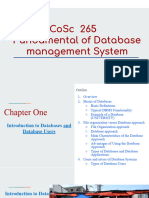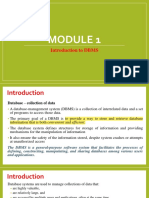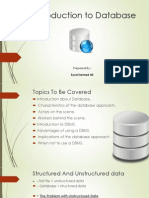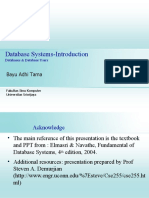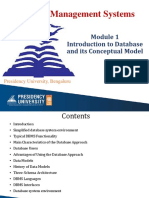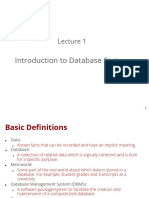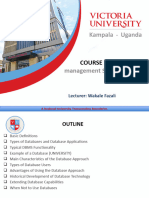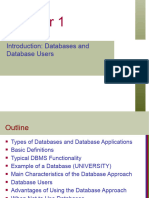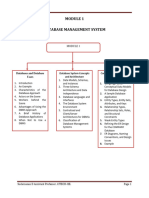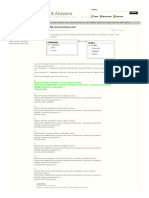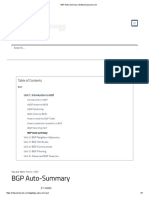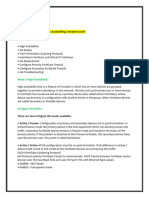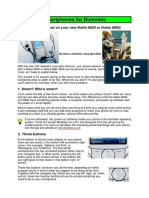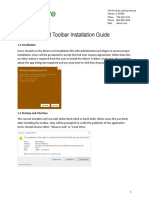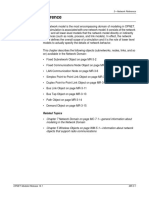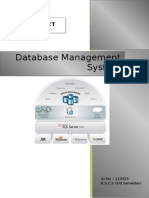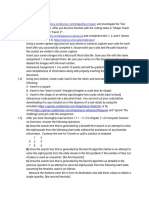0% found this document useful (0 votes)
37 views27 pagesChapter 1 - Introduction To Database Systems
Uploaded by
teseman2020Copyright
© © All Rights Reserved
We take content rights seriously. If you suspect this is your content, claim it here.
Available Formats
Download as PPTX, PDF, TXT or read online on Scribd
0% found this document useful (0 votes)
37 views27 pagesChapter 1 - Introduction To Database Systems
Uploaded by
teseman2020Copyright
© © All Rights Reserved
We take content rights seriously. If you suspect this is your content, claim it here.
Available Formats
Download as PPTX, PDF, TXT or read online on Scribd
/ 27


